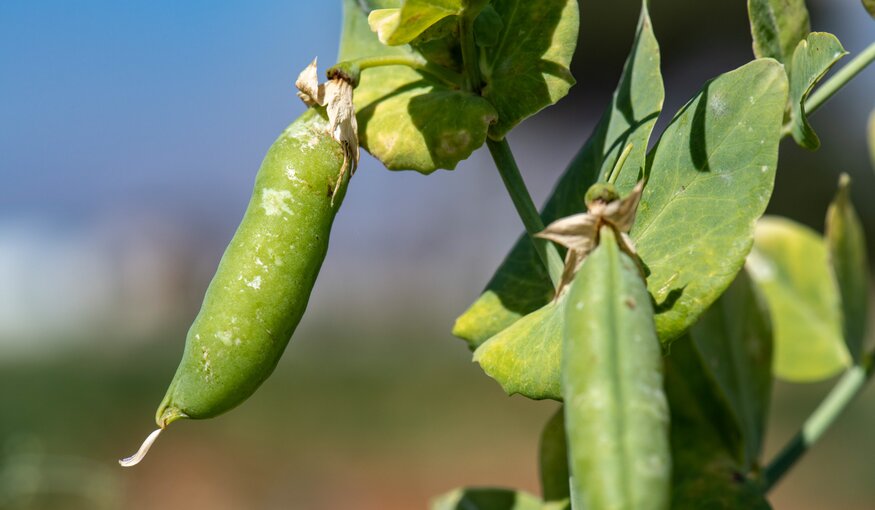Mushy or Not, Peas Need Strategic Support

Pisum sativum. Seed regeneration plots at American University of Beirut's AREC station near ICARDA's Terbol station in Lebanon's Beqaa Valley. Photo: Michael Major/Crop Trust
11 September 2023
If you have ever eaten fish and chips in the north of England, you will likely have been confronted with a side order of mushy peas. Depending on where you come from, these are either a delicacy or hideous slop destined for the bin.
Mushy peas are just one of the many forms in which peas (Pisum sativum) are eaten. Other iterations include mangetout — pods harvested before the seeds have really started to form — and snap peas — slightly more mature pods, with the seeds beginning to develop and swell — as well as fresh, green garden peas and dried peas, harvested dry at full maturity. These go into the likes of mushy peas, soups, stews and processed foods. Even the immature plants — pea sprouts — are consumed, most commonly in stir fries.
And peas are not just food for humans. The vine is an excellent source of high-protein animal feed, whether consumed fresh or processed into feed concentrate.
Early Domestication, Wide Diversity
The pea is one of the earliest crops to be domesticated, emerging from the Fertile Crescent some 10,000 years ago. This region has seen the development of a wide range of varieties and types, from the small-seeded petit pois type favored in France to the large-seeded marrowfat type used to produce the wasabi pea snack in Japan.
But, as with many other crops too, this diversity is under threat from climate change and the loss of traditional varieties as farmers switch to modern high-yielding varieties with the processing and culinary qualities demanded by the market.

Record for a pea accession on GRINGlobal. Photo: Michael Major
Review of the Status of Pea Collections
In 2023, the Crop Trust published the Global Strategy for the Conservation and Use of Pea (Pisum sativum L.) Genetic Resources to help to make sure that the full range of pea diversity is available to future generations. Mushy peas might not be to everyone’s taste, but it would be a pity if no one could even try them.
According to the strategy, while more than 130 institutions hold a total of more than 100,000 types of Pisum, half of the holdings are concentrated in only seven seed collections.
Many of these genebanks are facing operational challenges, including shortage of staff and funding and limited facilities. Moreover, not all of the collections have their passport, characterization. and evaluation data in electronic format, which hampers both their management and the use of the collections by researchers and plant breeders.
The study also identified gaps in the collections, including landraces in some countries and crop wild relatives in specific parts of their distribution.
Priority Actions
The strategy identifies several priority actions to ensure that pea diversity is conserved and made available for the long term.
The first is the establishment of a pea working group to steer the implementation of the strategy and ensure it evolves to meet future needs. "To move forward with this, we need leadership and coordination among the key stakeholders,” said Peter Giovannini, one of the report’s authors. “Creating a formal working group or international advisory group could fill this need."
The next step is to improve and expand passport data on the collections, making it available online, and adding data on the performance and genetics of seeds from all key collections. This will help assess the uniqueness of the collections, encourage their use and contribute to establishing a more rational and efficient global system for conservation of pea diversity.
And finally, the strategy recommended a program of targeted collecting for both landraces and wild relatives aimed at filling gaps in the existing collections.
Whether your passion is mushy peas or the delicate sweetness of petit pois, the new global strategy ensures plant breeders and farmers have the diversity they need to put peas on our plates into the future.
Categories: Global Crop Conservation Strategies, Pea
